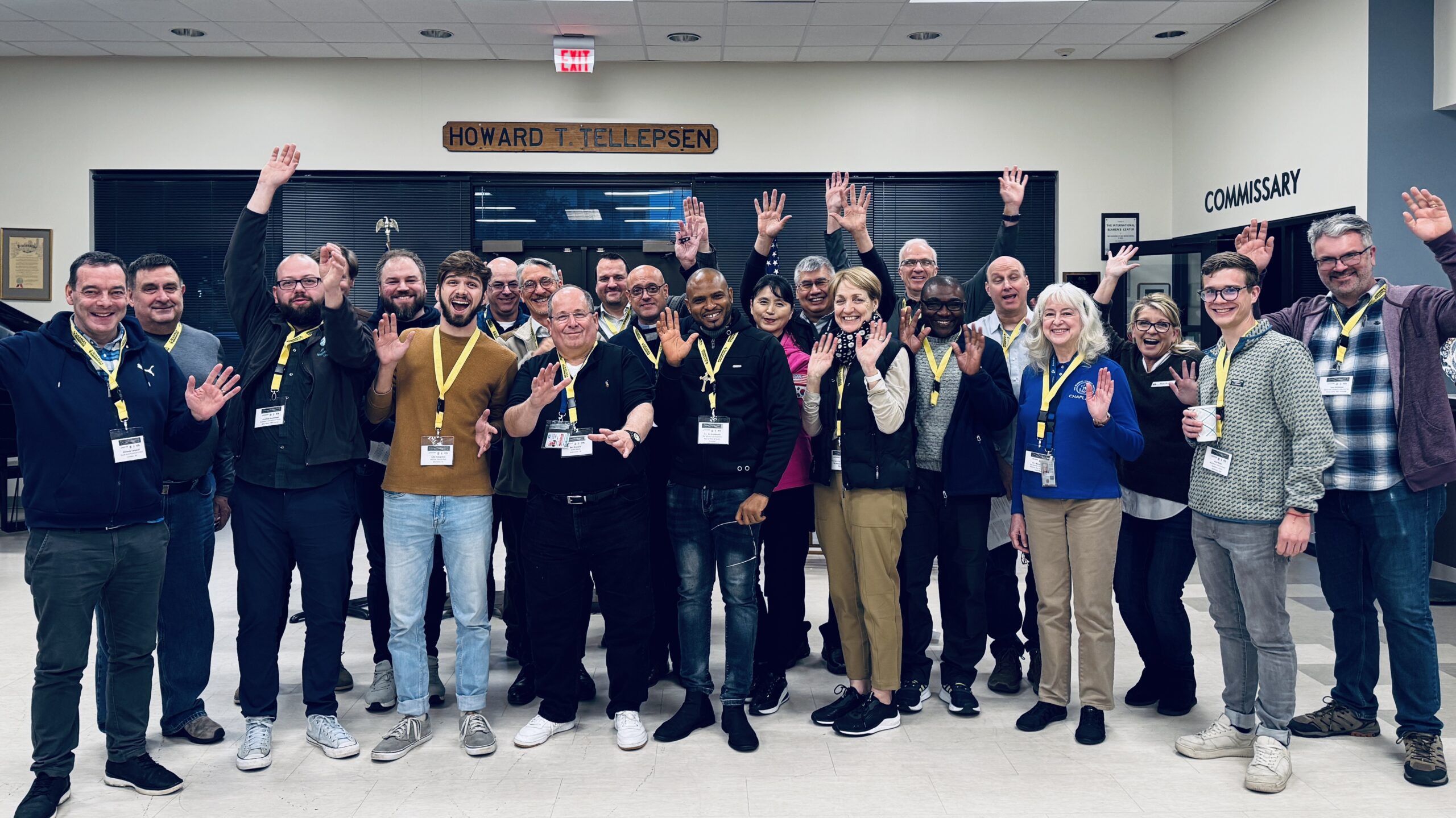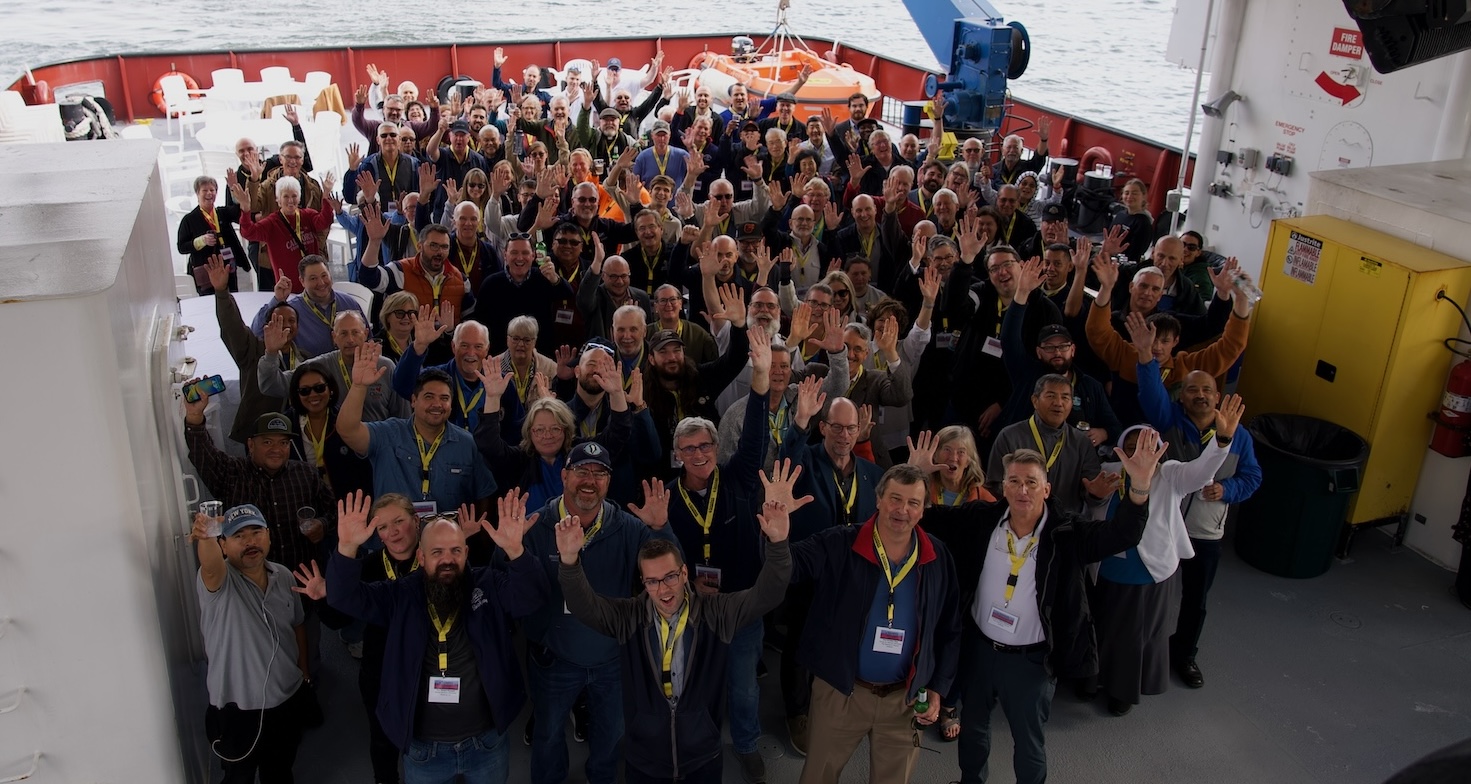by Susan Huppert, NAMMA
Sometimes things just get in our blood. For conservation activist, Sigurd Olson, it is the wilderness. For television personality, Jay Leno, it is cars. For some it is other-centered living. Ministry to Seafarers chaplain, the Rev. Gary Roosma understands this well.
Roosma has served as a missionary in Malaysia for 10 of his 23 years with Overseas Missionary Fellowship. Setting up a home, learning languages and assimilating to other cultures are measures not all can identify with. He understands seafarers working and living away from home in a personal way. His focus is all about others.
Chaplaincy with the Ministry to Seafarers seems a natural outgrowth of his care for the international community. As their chaplain, mastering multiple Asian languages has bridged opportunities for service among seafarers in the Port of Vancouver.
This heart-felt connection, historically shared by others, has led the Ministry to Seafarers in the Port of Vancouver, B.C. to celebrate a 50 year anniversary.
“I fell in love with seafarers and a ministry that never let me go,” said former chaplain The Rev. Ernst de Vries.
The long-standing commitment of the church and those who serve in this unique setting is the foundation which continues to bring meaning to the lives of countless seafarers over the years.
Prior to the formal development as a ministry, the Christian Reformed Church noted during the 1960s that church members, particularly of Dutch heritage, had been befriending Dutch seafarers in the Port of Vancouver. They recognized the needs of those on oceangoing vessels and the interest of their church members to respond. In 1970 the denomination formally began a mission in the port. The goal of the budding outreach was to meet with visiting seafarers and communicate the saving grace of Jesus Christ through word and deeds.
Rev. Jeff Dresselhuis was called as the first chaplain. He operated the Ministry to Seafarers from his home. His strong suit was evangelism. According to those who served years later, Dresselhuis was compelled to see that others had the opportunity to learn of Christ. With a basement full of Bibles and literature in many languages, he faithfully visited ships for 23 years in Vancouver’s port caring for international seafarers in any way he could. His focus developed a network of interest and provided a foundation for those who followed.
In 1993, the Rev. Simon Wolfert assumed the role of chaplain. Wolfert was more ecumenically inclined. Along with ship visits he elaborated the ministry by developing a close relationship with the Anglican “Mission to Seafarers” also working in the Port of Vancouver. Collaboration in outreach developed during these years and broadened the common goal of caring for seafarers.
Meanwhile, God was preparing for the continued growth and stability of the Vancouver ministry and those who would follow.
While a student in Grand Rapids, Michigan, Ernst de Vries was snagged by a film presented during a mission fair to college students about the Ministry to Seafarers outreach in Montreal.
De Vries recalls a teacher responding, “Ernst – that’s a job for you!” He felt this as a confirmation that ministry to seafarers, a cross-section of two things he was passionate about: people and the sea would suit him.
“I am a people person. I find the international aspect of the whole thing very intriguing,” he said.
De Vries accepted a summer internship of ship visitation on cruise ships in 1985, while at Regent College in Vancouver, further confirming his deep commitment to seafarers.
He later served on the Seafarers Committee which oversaw the ministry, volunteering for years.
The Christian Reformed Church always highlighted the Gospel. They were generous in handing out Bibles, DVDs, and Christian literature. Social interaction is needed too.
“I would go to the ships at lunch time or 3 p.m. and the moment they would come together we could socialize. Visit with people from all countries, Muslim or atheists. It was very meaningful.”
By 2003, the ministry sought to fill the chaplaincy position again. De Vries was hired and served primarily at the Roberts Bank location until 2017.
The outreach has evolved from seafarers pushing coins into payphones outside the center to briefly reach their families around the globe to Face-time on the Internet. The more electronic it becomes, the more complicated connecting personally with seafarers seems.
“I understand they want to contact their families,” said DeVries. “Visiting with the seafarer in the centre gives us opportunity to care. Seventeen years ago, there was a social aspect . . . conversation. Today, everyone is on a computer, iPhone or iPad. It is very quiet.”
The Ministry to Seafarers operates out of two centers. One is in the downtown area of Vancouver where Chaplain Roosma works in partnership with the Anglican Mission to Seafarers and the Roman Catholic Stella Maris. The other is the Roberts Bank location where about 9,000 seafarers annually walk to the centre. The centres offer a small store, used clothes, literature, free 24-hour WI-FI access and chaplaincy.
But numbers are down now as more than half the seafarers will remain on their ships due to the COVID-19 concerns. Psychological barriers increase as fear and isolation continue.
Mission workers try to meet seafarers alongside the ship or at the top of the gangway with gifts of chocolates or snacks and a brief conversation or prayer, Skyping, or staying in touch by Facebook and other internet options when ships leave port. However access to seafarers happens, current chaplain, the Rev. Gary Roosma says “being there in moments that matter” is what the ministry is about.
Financial support for Ministry to Seafarers in Vancouver comes through annual gifts from the Christian Reformed Church, Classis of British Columbia Southeast and British Columbia, Northwest, in addition to individual donors. Most recently, the church is indicating that will change.
“We are very well connected with the port authority and local companies,” said Roosma. “They call us the sharp edge of contact with seafarers.”
Thanks to the West Shore Terminal’s donation of a van three years ago, the mission can transport seafarers outside the port, when regulations allow.
Donations for the ministry’s Christmas giving come from companies within the port also. But the fact is financial support will need to increase. As a former missionary, Roosma, who previously raised personal support isn’t rattled.
“The support structure is changing. The challenge is building awareness among supporters and churches; learning how to keep the vision thriving in the minds and hearts of those who support us and connect to them in different ways.
“I am confident, the Lord will continue to provide. The way the Lord orchestrates things - I am amazed at how it works,” he said.
The development of a Vancouver Port Seafarers’ Welfare Committee is extending awareness of seafarers’ needs and building support. The committee includes representatives from multiple entities within the port community. It serves to inform and align various aspects of shipping among them, specifically relating to the seafarers.
“The level of awareness has increased significantly and I am encouraged,” said Roosma. “We need to do what we can. I am hoping it [the Seafarers’ Welfare Committee] will remain.”
In a time when businesses and non-profits struggle to stay afloat, those involved find the 50-year history of this mission quite notable.
“It is amazing. It is still the church, the body of Christ, who maintains the compassion and the vision to care for seafarers spiritually and physically,” said DeVries. “It faithfully goes along in the Port of Vancouver.”





